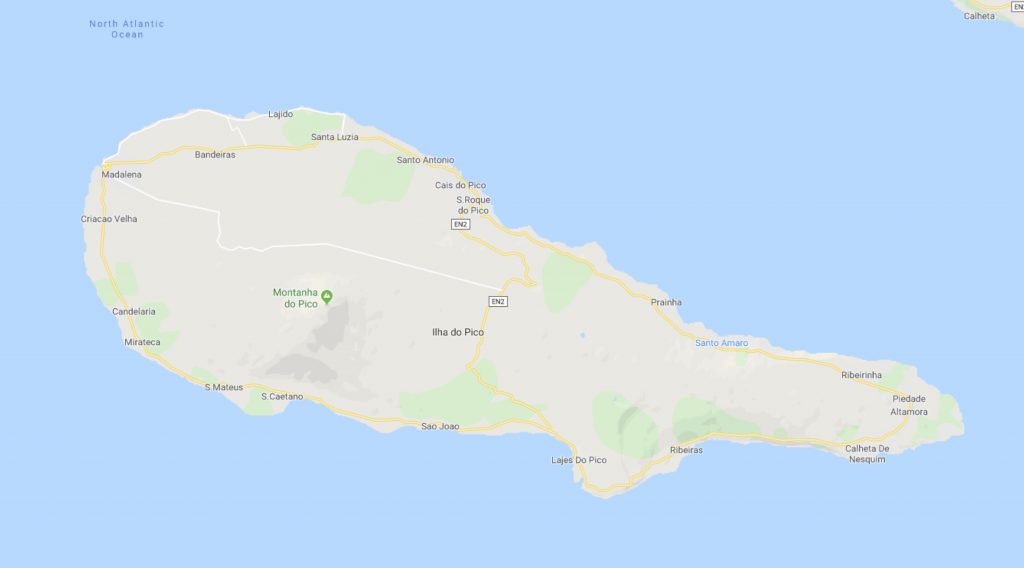
GEOGRAPHY
Pico Island, Azores – is the second largest island in the archipelago, with a surface area of 444.9 km2 and an elongated shape, given its 46.2 kilometers in length by 15.8 in maximum width. Dominated by the volcano of the mountain of Pico, located in its western half, the island is 8,3 km from its closest neighbor (Faial), and is populated by 14,148 inhabitants (data from 2011).
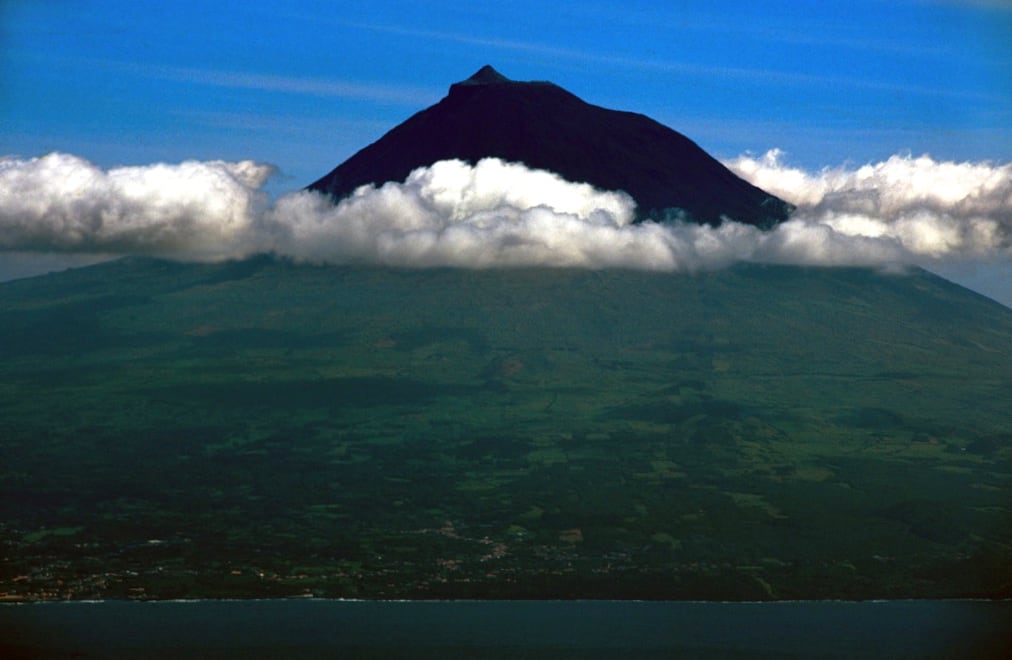
It is the southernmost island of the Central Group of the archipelago, and one of the vertices of the so-called “triangle”. Its highest point (2350 m.) Is also the highest point in all of Portugal: it is the ‘Piquinho’, located on the mountain at 38 ° 28’07 ” north latitude and 28 ° 23’58 ” west longitude.
HISTORY
Portuguese navigators probably discovered this island at the same time as the others in the Central Group. Initially known as the island of D. Dinis, the current name derives from being the highest Portuguese mountain. It is believed that Pico was the last island of the Central Group to be populated, an enterprise that materialized essentially after 1480. 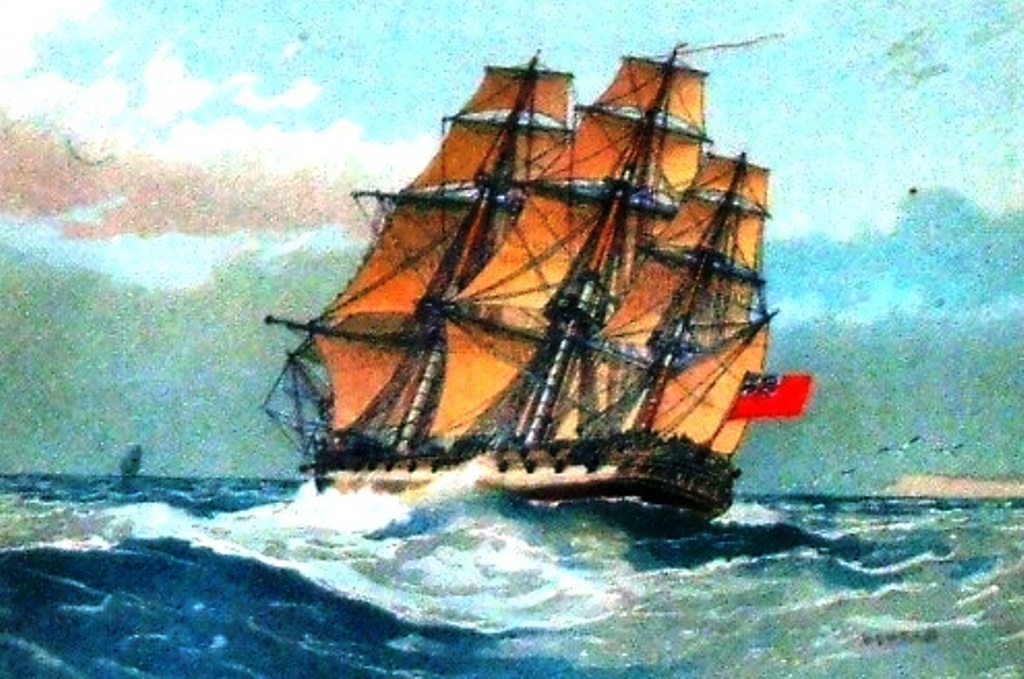
The settlers, coming from Mainland Portugal, after making a stopover in Terceira and Graciosa, chose Lajes as their first residence. The wheat and ford plantations (plant from which a tint was extracted), which began following the example of the nearby island of Faial, were the fragile basis of economic development during this first century: in fact, the dry and warm climate of some areas of the island, and the same mineral richness of the lava soil, which opposed the expansion of agriculture, allowed the growing success of viticulture, in which the vine called verdelho predominated. Little by little, the wine and Pico brandy emerged from the remaining Azorean wine production, and began to be appreciated even outside the island, which became particularly important especially in the eighteenth century. Exported throughout Europe and America, Verdelho wine was known internationally, to the point of being consumed even by the Tsars of Russia.
From an administrative and economic point of view, Pico always had very close relations with Faial, both because Horta was the port from which the Picoense products destined for export (the island, in fact, had no safe coves), and because, until at the wine crisis of the 19th century, most of the owners of the lands of the mountain island came from the neighboring island. During the first quarter of the eighteenth century, important volcanic eruptions took place, a kind of omen of the end of the golden age of verdelho. In the mid-nineteenth century, the devastating attack of powdery mildew and phylloxera destroyed most of the vineyards. And once the vineyards, tradition and prestige were lost, the massive emigration of the inhabitants to Brazil and North America occurred. As an alternative, a portion of those who remained turned to the sea.Already from the eighteenth century, in fact, the island had come into contact with activities related to the capture of whales, given that the British and North American fleets chased sperm whales in its waters, using their ports not only to refresh the crews, refuel or make repairs, but also to recruit additional arms to be used in the tough battle against the sea giants. Towards the second half of the nineteenth century, the local community began to carry out the business on its own, and since sperm whale hunting proved profitable, other islands of the archipelago also began to practice it. This economic dynamic continued until the mid-twentieth century, an era in which the business went into decline. The end came in 1986, with the definitive prohibition of hunting cetaceans, when the Portuguese state signed the prohibitive moratorium of the International Whaling Commission.
By recovering centuries-old traditions and reinventing them, Pico still maintains a very close relationship with sperm whales. Contact with these cetaceans, now protected, is the basis of the current tourism industry. Wine-growing also begins to regain importance, dynamizing an economy in which the tertiary sector, agriculture, livestock and fishing are the main activities. The uniqueness of Pico’s winemaking has been recognized internationally: UNESCO, in 2004, declared the Pico Vineyard Landscape part of the world heritage of humanity.
NATURE
THE GRAY ISLAND
The large lava fields that characterize the landscape of the island, and which the local population calls lajidos or terras de biscoito (‘biscuit lands’, the name given to the recently solidified lava), according to their greater or lesser irregularity, are the reason why gray is considered the emblematic color of Pico.
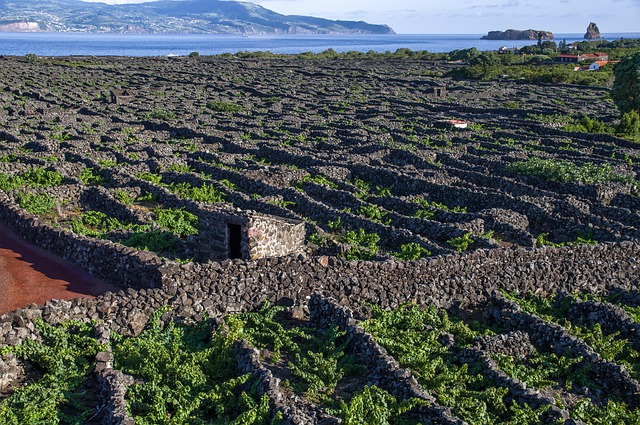
And also the walls that divide the vineyards into small squares, the stone mountains in the fields, the walls that line the paths and those that divide the properties reproduce this shade, always enlivened by the green of the vegetation. The immense volcanic cone of the mountain rises majestic, standing against the blue sky or letting yourself be enveloped by a cloak of clouds.
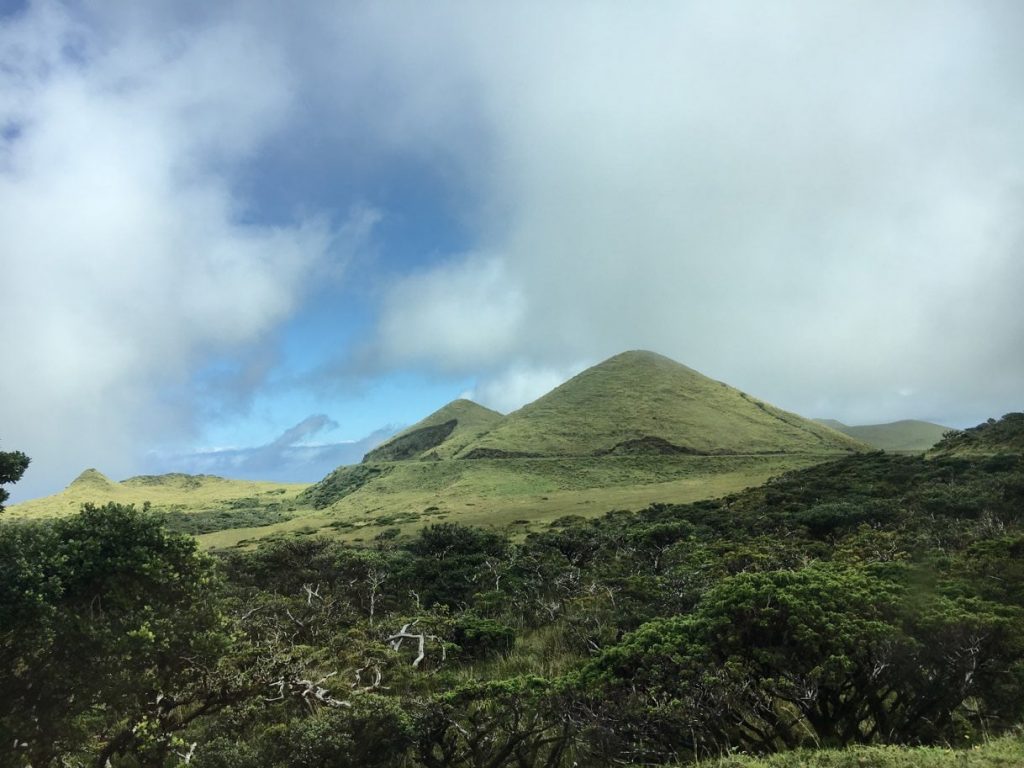
To the east of this colossal volcano, the island extends into a mountain range, which is also volcanic, covered by exuberant patches of endemic vegetation and green pastures, in the midst of which about two hundred small cones of basaltic slag emerge and lie down twenty lakes. These water surfaces, together with more or less flooded ponds and peat bogs, serve as a refuge for sedentary birds or exotic migrants such as the gray heron.
VOLCANIC LANDSCAPES
Imposing, majestic, magnificent: these are some of the most used adjectives to describe the Pico volcano, given its 2,350 m height, its 19 kilometers of average diameter at sea level and its slender shape. The third largest volcano in the Atlantic looms over the landscape of the island, exerting an irresistible attraction on those who observe it, even on nearby islands. In its main crater there is a lava cone called Piquinho, on the top of which two permanent fumaroles recall the volcanic nature of the places. At around 1,250 meters above sea level, where the ascent begins on foot, the gaze can already embrace much of the island, as well as the nearby Faial and São Jorge. The ascension causes high doses of tiredness and satisfaction: both for the fact of conquering the top and for the fantastic panoramas. On days when the sky is clear, you also get the additional sighting reward for Graciosa and Terceira.
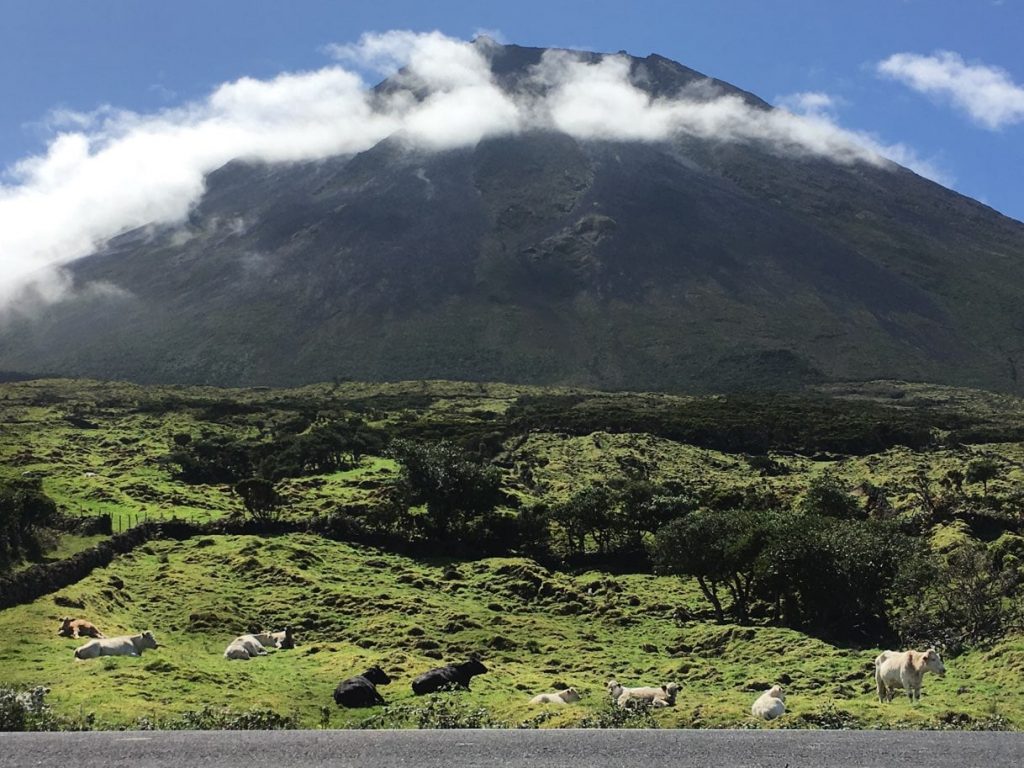
The Achada plateau dominates the eastern half of the island, on which a 30 km long mountain range develops, between the lake called Lagoa do Capitão and the place called Ponta da Ilha. In the areas surrounding the existing 200 volcanic cones, there are peat bogs, ponds and lakes, those of Grotões, Rosada, Paul, Landroal, Caiado, Peixinho and Negra. This area constitutes one of the most important areas of endemic vegetation, with species such as the Azores juniper, brugo, Rhamnus glandulosa or Euphorbia stygiana organized in large and dense spots.
But the true emblem of the island are the basaltic lava fields, a repertoire of countless and diverse phenomena related to the volcanic activity that originated the island, and which are reminiscent of those that occurred in Hawaii. In certain cases, these lava fields are associated with eruptions witnessed by the populations who, frightened, gave these uncultivated and rocky soils the suggestive name of mistérios (‘mysteries’). Thus were born the Mistério da Prainha (in the 16th century) and the mistérios of Santa Luzia, São João and Silveira, in the 18th century.
COAST
The dark gray of the basalt, the crystalline blue of the waters and the milky white of the foam of the waves form the chromatic trilogy of the Pico coast. Without beaches, but with many enchanting bays and coves, the island is equipped with various bathing areas, often obtained from the naturally jagged coast, and therefore able to offer beautiful natural scenery. In some parts of the coast, very high cliffs rise, as imposing and admirable as those of São Jorge: the Terra Alta viewpoint offers precisely this panorama.
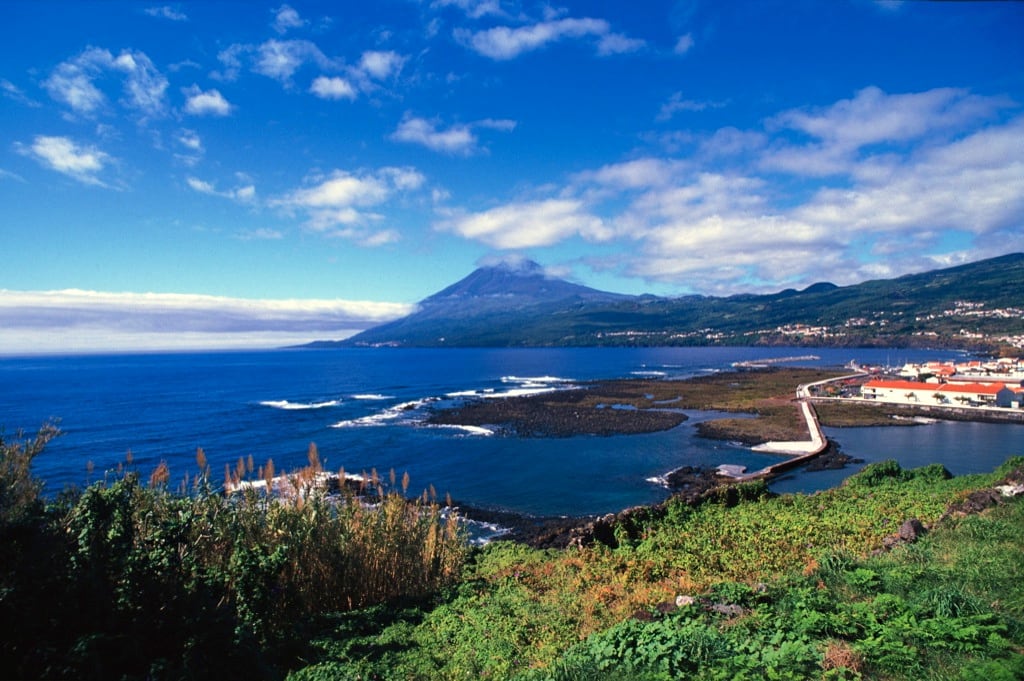
Arches, coastal caves and hard rock banks follow one another along the coast, giving access to the vineyards, with their typical cellars. In many places, such as Ribeiras, Lajes do Pico or Ponta do Mistério, extensive lava fajãs (flat coastal areas) are visible, an eloquent testimony to the continuous struggle between the creative force of volcanoes and the destructive action of the sea.
ATTRACTIONS
The observation of cetaceans is the natural extension of the island’s whaling tradition, now transposed into the present. The waters of Pico are excellent for sailing or kayaking, and a boat ride allows you to admire the profile of the coast, ideal for rock fishing and diving.
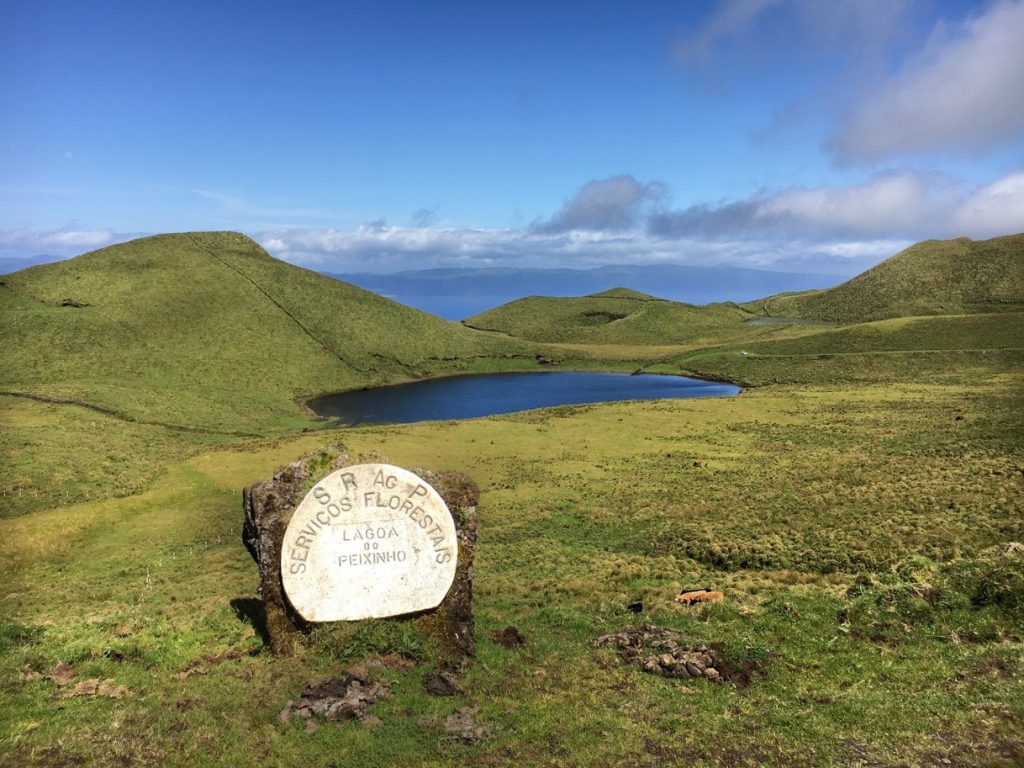
Numerous natural pools, located on the lava rocks, invite you to bathe in the crystal clear waters of the sea. The volcano and the area at high altitude offer spectacular trekking between paths and lagoons.
HERITAGE AND CULTURE
To protect himself from the salt and wind, and to make the most of the climatic and geological conditions of the rocky soils and lajido areas, the man from Pico organized the grounds into an impressive mosaic of black stone: a horizon extends huge netting of currais, that is of small squares delimited by basalt walls, inside which the vines are planted.
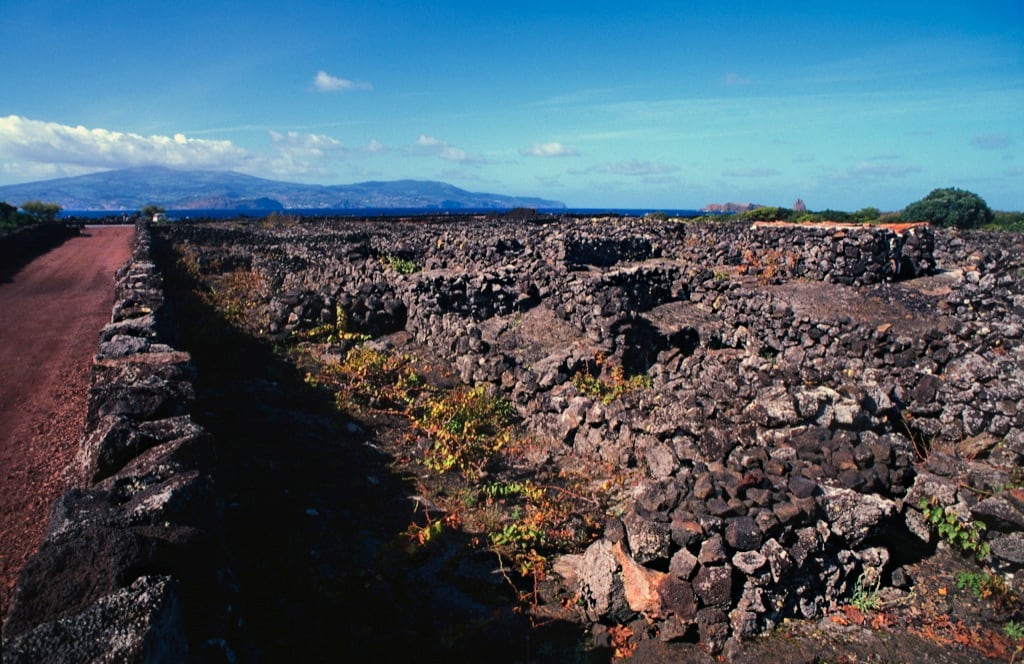
Criação Velha and Santa Luzia are the greatest examples of this art of dividing the land by building hundreds of kilometers of stone walls, masterfully erected dry. These lands, whose lava nature corresponds to ancestral cultural practices, constitute the landscape of the vineyards of the island of Pico, a UNESCO World Heritage Site since 2004.
While the rilheiras are visible on the black lava soil, the furrows left by the wheels of the carts dragged by the oxen that transported grapes and barrels, in the harbors and marinas you can see the rola-pipas, that is the ramps dug to easily roll the barrels up to boats: elements that, even today, are symbols of this agricultural activity.
ARCHITECTURE
In addition to its churches and its rural architecture, the specificity of Pico is partially associated, also in this field, with the cultivation of the vine. In the area of Areia Larga there are beautiful villas, which were practically the second home of the owners of the vineyards, who normally lived in Faial. Dating from the eighteenth and nineteenth centuries, they are characterized by very square lines and additional structures such as wells, cellars and warehouses.
In the cellars of Pico, sometimes renovated for agritourism purposes, the volcanic rock walls blend harmoniously with the sea and vegetation. The living memory of the production cycle of the verdelho also revolves in the Museu do Vinho. Located in Madalena, in an ancient summer house of the Carmelite friars, it has a collection of agricultural tools, stills and barrels. A leafy grove of dragon trees makes this place of production even more spectacular, which seems to have remained unscathed despite the passage of time.
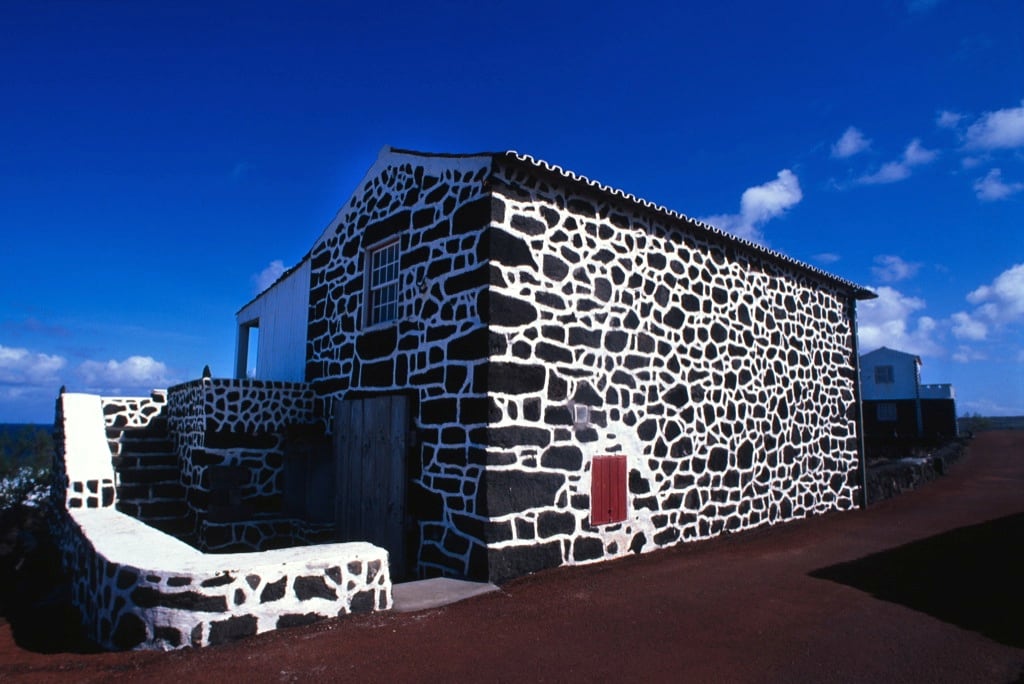
The volcanic nature of the island is also evident in places such as Cabrito, Arcos, Lajido, Cachorro or Calhau. The art of carving stone finds its best expression in Pico: the thickness of the black basaltic rock perfectly matches the white frames of the windows and the bright colors (red or green) used to paint the wooden doors.
The maroiços are unique architectural elements in the archipelago. Present mainly in the Madalena area, they are piles of stones, generally pyramidal, reminiscent of the Aztec pyramids. Made by aggregating the stones collected in the land dedicated to agriculture, to facilitate plowing, they grew with the passing of the decades and centuries, and still resist, as monuments to the tenacity of the inhabitants.
CULTURE
It is in Pico that the most important testimonies of the Azores whaling epic are found. Lajes, São Roque, Calheta de Nesquim or Ribeiras are perfect destinations for excursions that allow you to discover picturesque ports, old whalers and typical alleys. Whaling is explained in places such as the Museum of Whaling Industry, in São Roque, which occupies the building of the ancient Armações Baleeiras Reunidas factory, where there are still the hobs, cauldrons and other equipment used in the transformation of the sperm whale.
A rich archive of photographs, and an important collection of tools and boats, are instead exhibited in the Museum of Whalers, in Lajes do Pico. The exhibition is located in the ancient boat huts, and includes a lifeboat with harpoons and other hunting tools, and a series of beautiful specimens of scrimshaw (carving or sculpture on whale teeth).
Santo Amaro was, in other times, the center of the shipbuilding of the archipelago, and still today it preserves the art of craftsmanship of boats. The shipyard, near the sea, allows the viewer to enter the ‘skeleton’ of the hulls, more or less complete according to the progress of the works. And, next to it, a private museum reconstructs the human dimension of the link between the island of Pico and this activity.
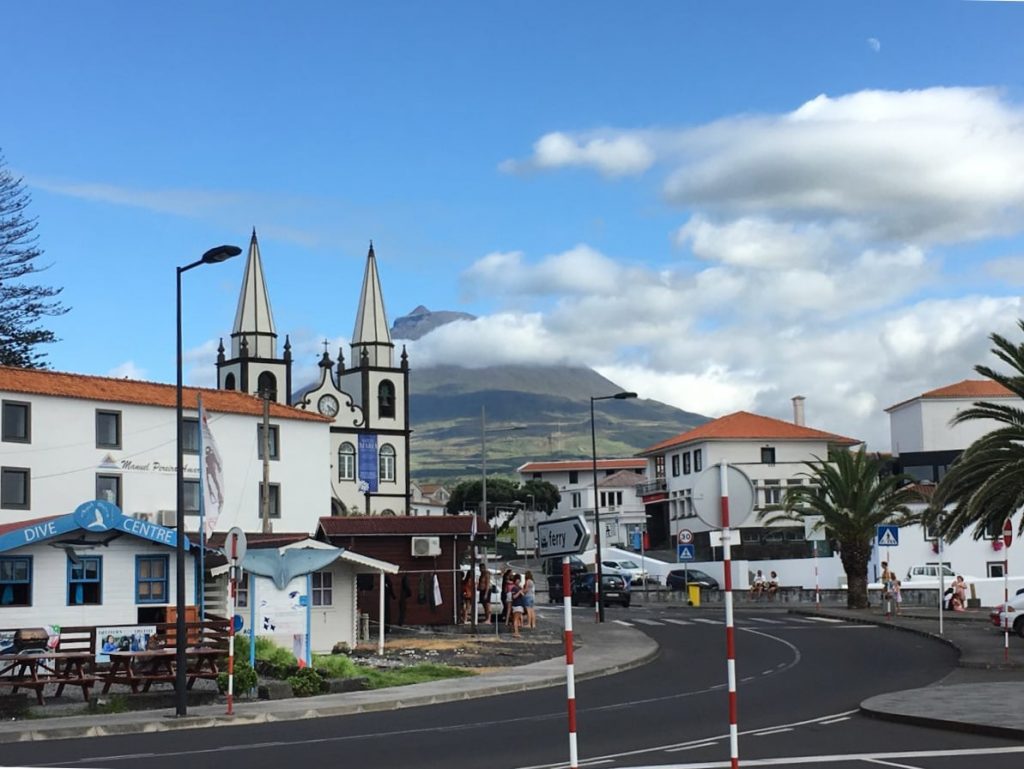
CRAFTS
The School of Crafts of Santo Amaro and the Regional School of Crafts, in São Roque, are institutes that try to keep alive traditions such as straw hats, fish scale flowers or crochet lace. The wooden miniatures of whaling lifeboats or the iconographic reproductions related to the culture of wine – such as the carts dragged by the oxen carrying the barrels – are graceful testimonies of the history of Pico.
FESTIVITY
In addition to the Feast of the Holy Spirit, common to all the islands, a special devotion to Senhor Bom Jesus Milagroso (‘Mister Good Jesus Miraculous’) is dedicated to Pico, whose feasts take place in São Mateus around August 6, and express the veneration of pilgrims for a statue from Brazil and exhibited in the Sanctuary of Bom Jesus Milagroso.
GASTRONOMY
Land of winemaking tradition, in Pico white, red and rosé wines are produced, which are quite popular throughout the archipelago. Little by little, attempts were made to recover the prestige of the wine from the Verdelho grape, improving its production and innovating the products.
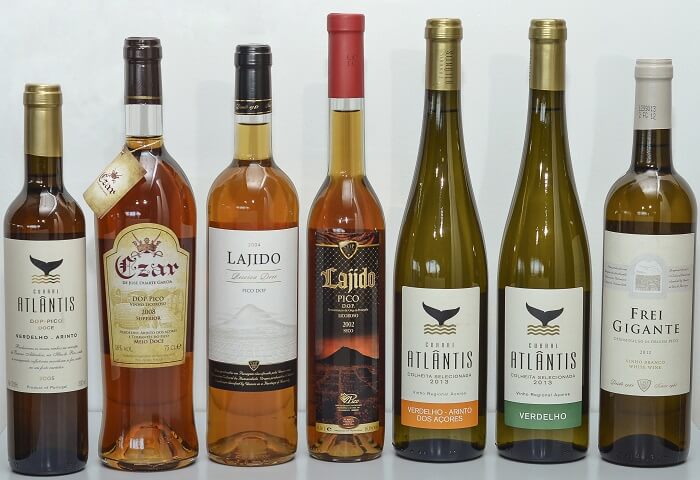
“Basalto”, “Lajido” and “Terras de Lava” are the commercial names of the wines of Pico: all recall the intensity of that human-nature relationship that the island cultivates. The Wine Cooperative of the island of Pico, in Areia Larga, concentrates local production, already based on new vines, and can be visited. The spirits of fig and medlar also have their admirers, and you can see ancient copper stills still in operation. Angelica and fruit liqueurs are sweeter proposals.
The island has always been a great fruit producer, and its figs are famous, with bright red flesh. Pythosphorus flower honey (incense) and soft paste cow’s milk cheese, or Queijo do Pico – DOP, occupy a prominent place in the list of island gastronomic delights.








